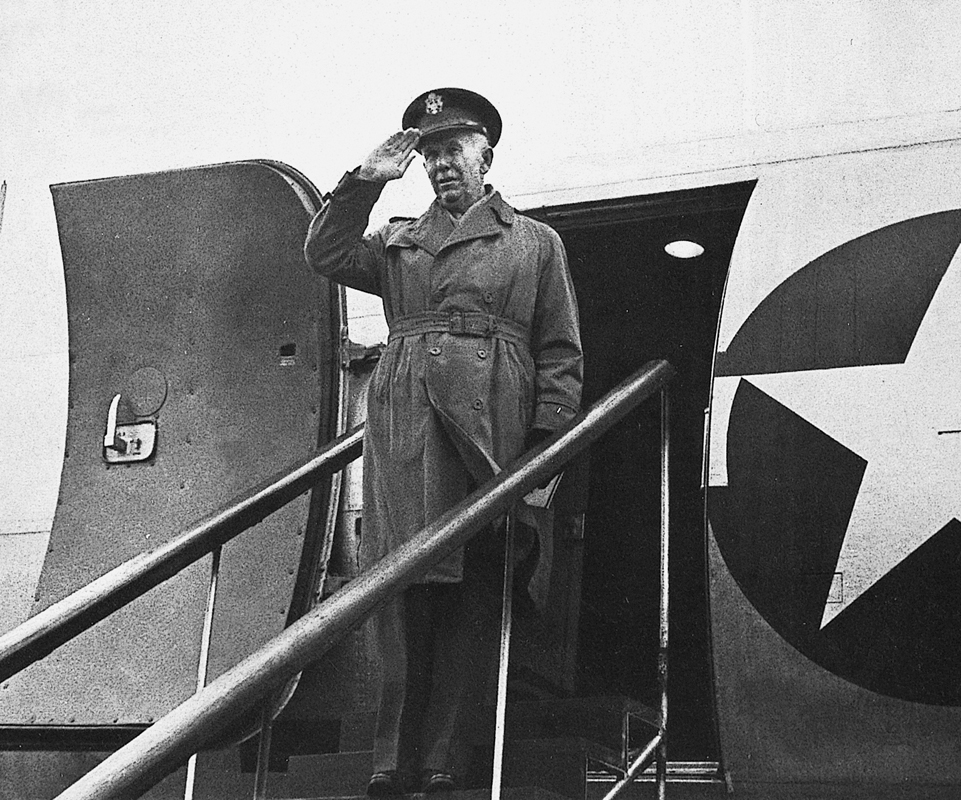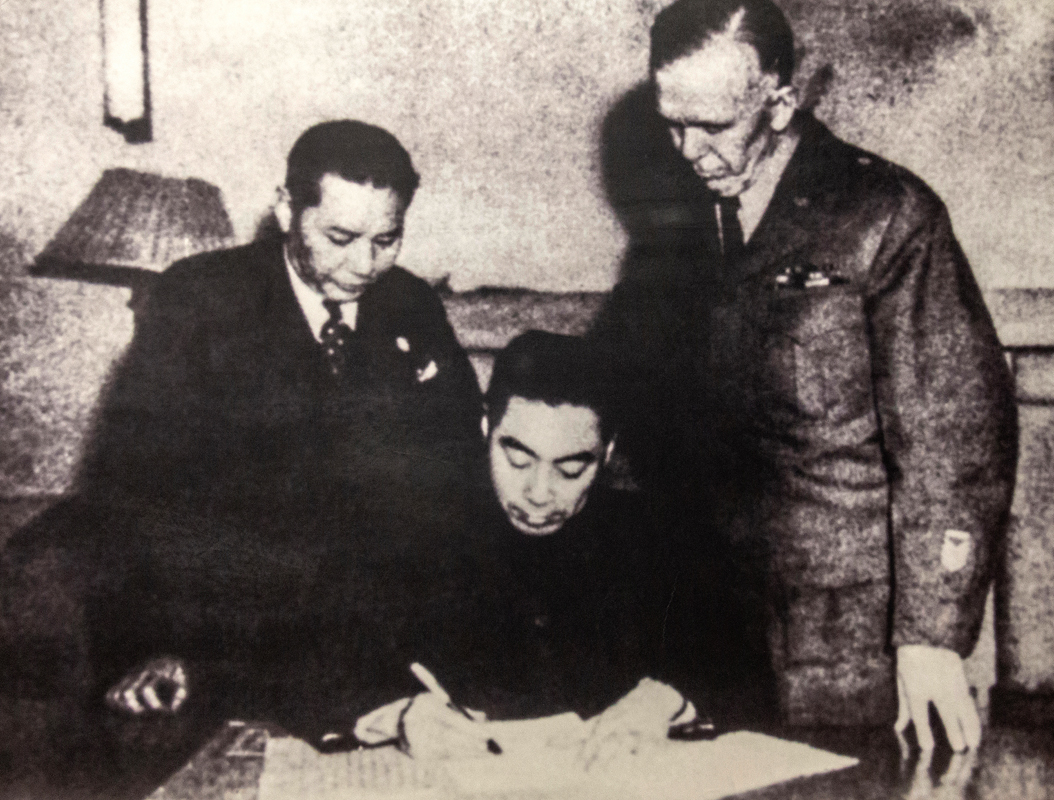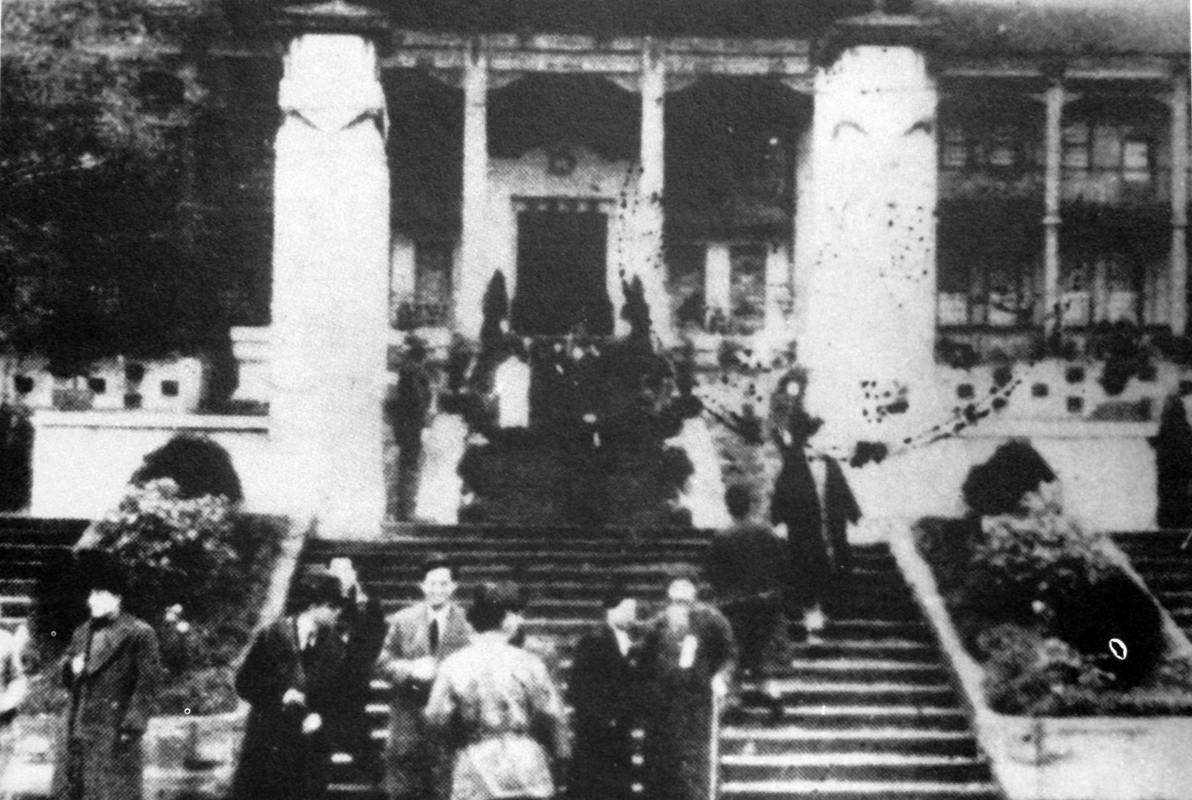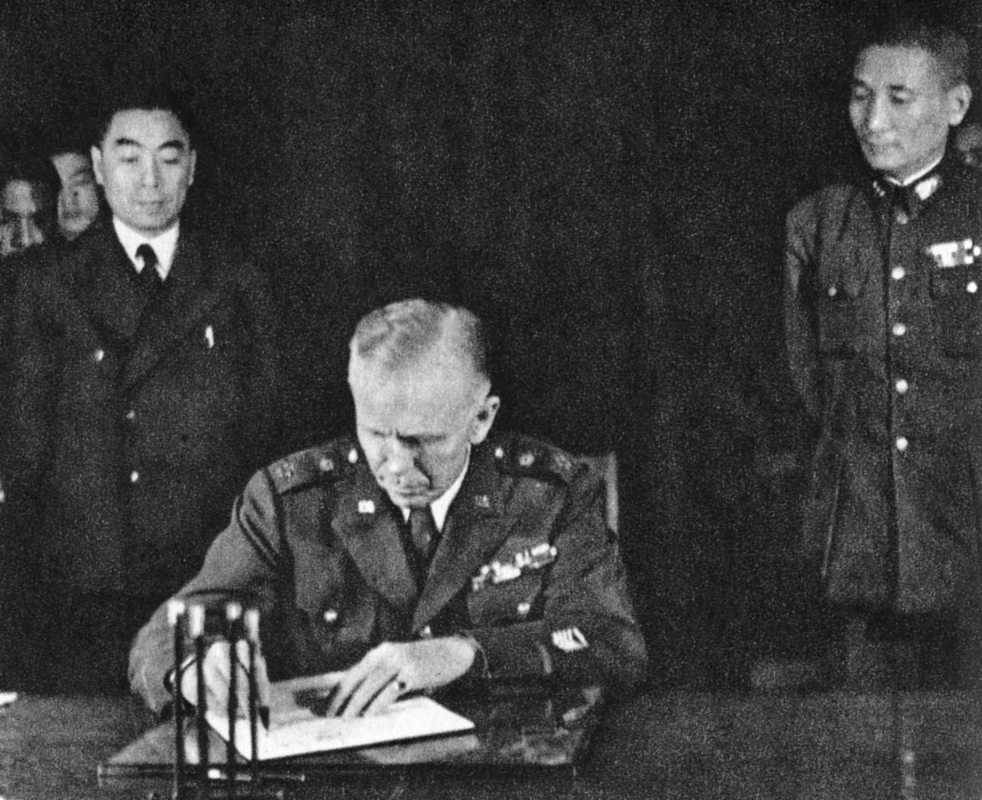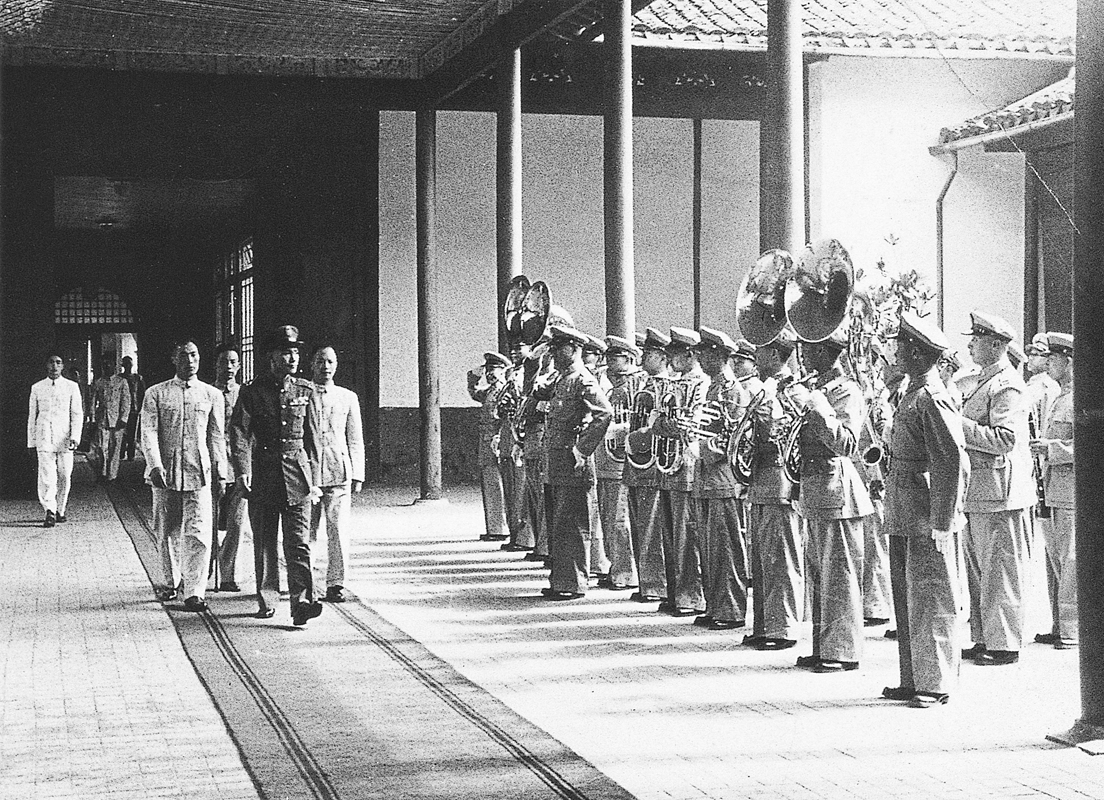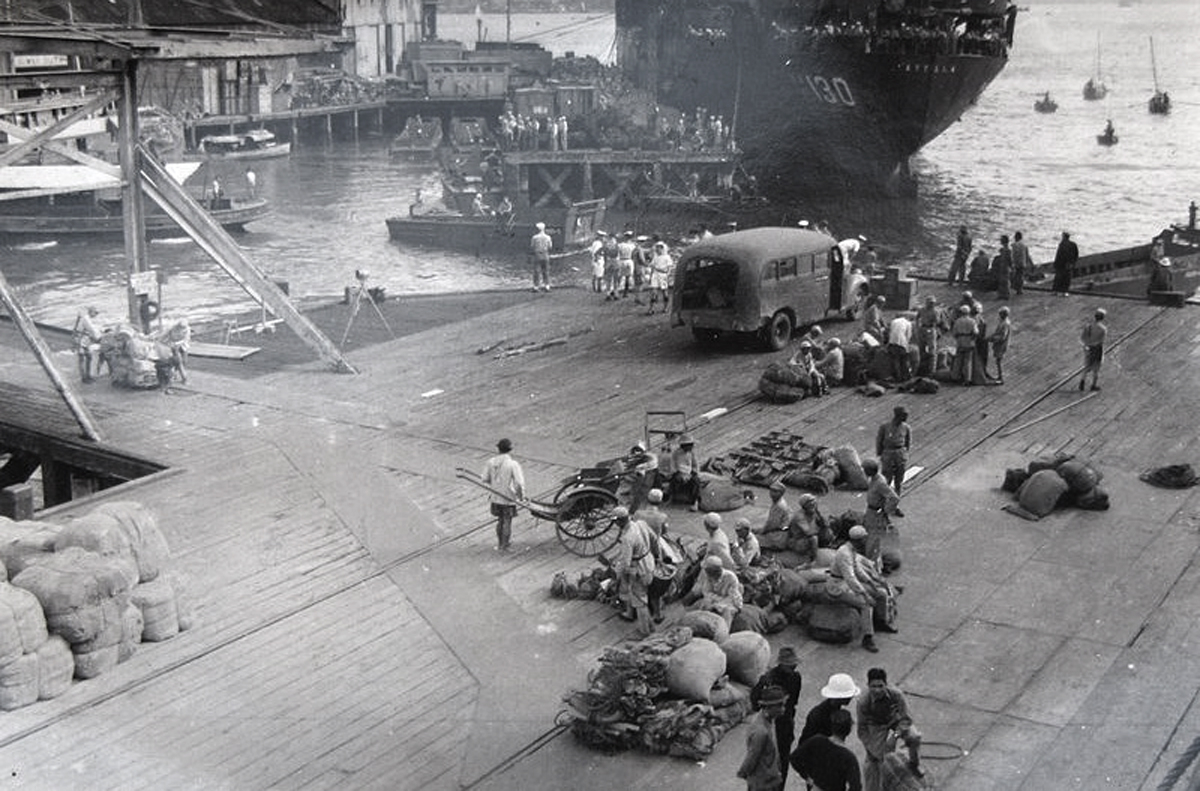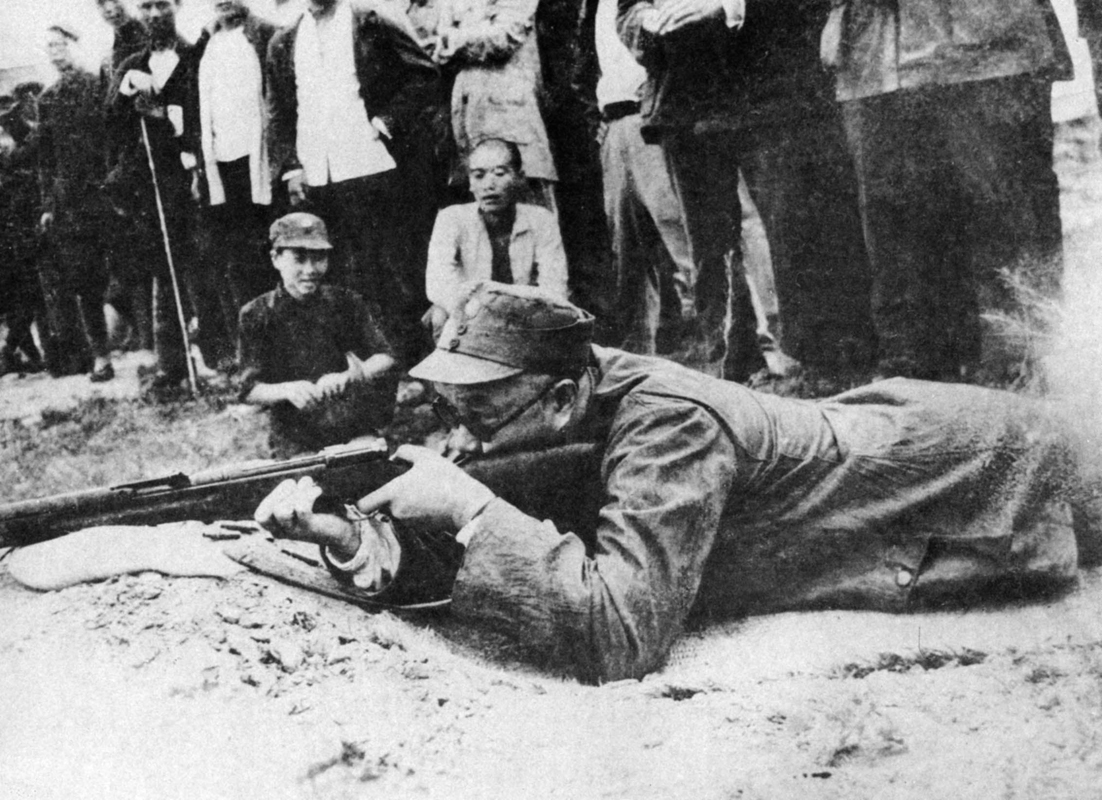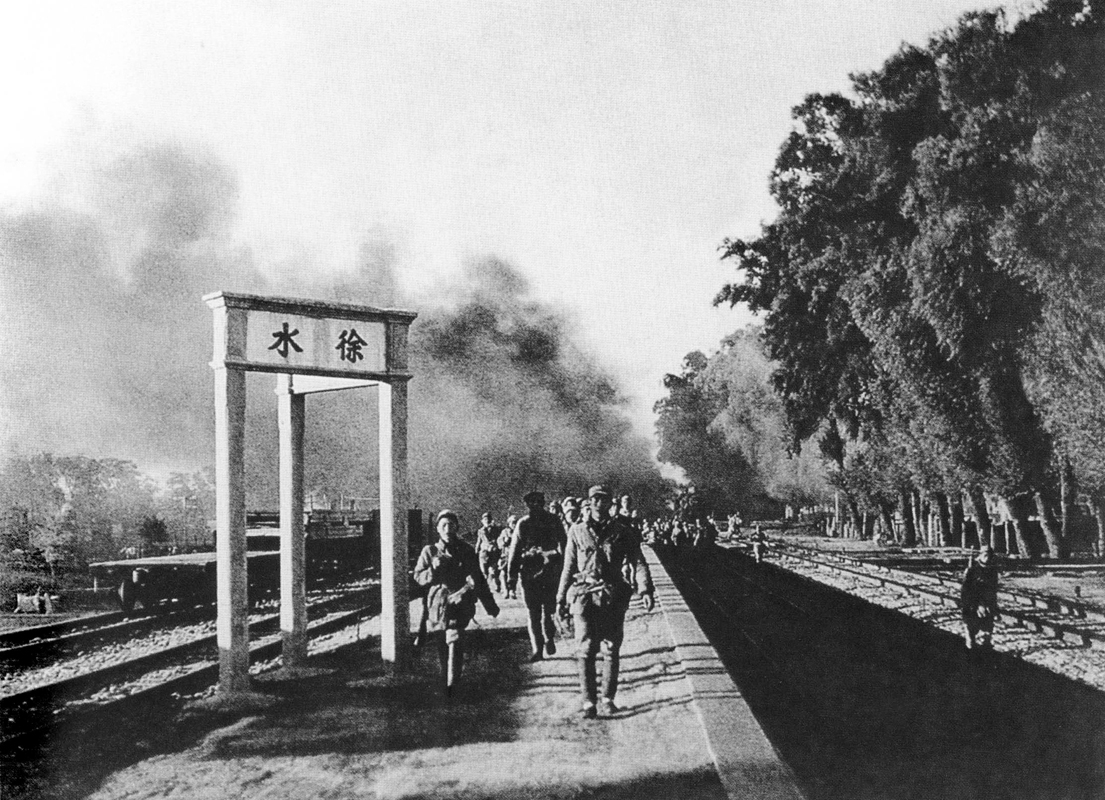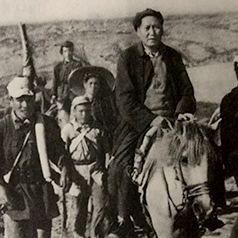Following the Double Tenth Agreement’s conclusion, the US President’s Special Envoy George C. Marshall came to China to mediate between the Kuomintang of China (KMT, 中國國民黨) and the Chinese Communist Party (CCP, 中國共產黨) in December 1945. In January 1946, Marshall, the Nationalist Government representative Zhang Qun (張群, later replaced by Zhang Zhizhong﹝張治中﹞) and the CCP representative Zhou Enlai (周恩來) formed the Committee of Three for military mediation. The Committee concluded a ceasefire agreement the same month.
To enforce the ceasefire, the KMT, the CCP, and the United States established the Executive Headquarters in Beiping (北平, now Beijing﹝北京﹞) to mediate disputes nationwide. At the same time, the political consultative conference in Chongqing (重慶) brought the Chinese political parties together, but little headway was made due to substantial divergence of opinion. On 5 May the same year, the Nationalist Government returned to Nanjing (南京) and a full-scale civil war broke out before long. The KMT unilaterally promulgated the Constitution of the Republic of China at the end of 1946. In 1948, the KMT alone conducted a National Assembly where Chiang Kai-shek (蔣介石) was elected as President and Li Zongren (李宗仁) as Vice President.
As for armed conflicts, the ceasefire orders given by the Committee all failed. In late June 1946, fierce armed confrontations took place in Central Plains Region , which marked the beginning of a full-scale civil war. After September, the CCP renamed its military the People’s Liberation Army (PLA) and confronted the KMT-led National Revolutionary Army (NRA) head-on. In January 1947, Marshall returned to the United States as the mediation failed.
|
|
When and where did the full-scale civil war break out? |
|
|
See answer below. |
In December 1945, the US President’s Special Envoy George C. Marshall came to China to mediate between the KMT and the CCP.
In January 1946, George C. Marshall, the Nationalist Government representative Zhang Qun, and the CCP representative Zhou Enlai formed the Committee of Three and signed a ceasefire agreement. The photo shows Zhou signing the agreement with Zhang and Marshall on his sides.
In January 1946, the United States, the KMT, and the CCP established the Executive Headquarters in Beiping that dispatched personnel to settle and inspect disputes nationwide. The photo shows three representatives posing for a group photo in front of the Executive Headquarters. From left to right: the CCP representative Ye Jianying (葉劍英), the US representative Walter S. Robertson, and the Nationalist Government representative Zheng Jiemin (鄭介民).
From 10 to 31 January 1946, a political consultative conference was held at the assembly hall of the Nationalist Government in Chongqing. Representatives of the KMT, the CCP, and other political parties attended the conference together with prominent figures from all parts of society.
On 10 January 1946, Chiang Kai-shek and Zhou Enlai giving speeches at the conference. However, the conference was fruitless due to the chasm between the two parties.
Negotiations continued after the political consultative conference, with army reorganisation topped the agenda. George C. Marshall signing the Army Reorganisation Plan on 15 February 1946, with Zhou Enlai of the CCP (left) and Zhang Zhizhong of the Nationalist Government (right) on his sides. However, the plan was never implemented as the two parties’ conflicts intensified.
On 5 May 1946, the Nationalist Government returned to Nanjing. The guard of honour playing military music when Chiang Kai-shek entering the office building. The negotiation venue shifted to Nanjing since then.
Active military deployment and fights continued during the negotiations. The photo shows a transport ship of the US carrying NRA troops arriving in Northeast China. After World War II, the United States aided the transfer of NRA troops with planes and ships. Meanwhile, the CCP troops also established strongholds in Northeast China during the Soviet occupation of Manchuria. After the Soviet withdrawal, the Northeast became a major hotspot.
On 17 June 1946, the CCP reorganised its troops in the Central Plains Region into the Shanxi-Hebei-Shandong-Henan Field Army (晉冀魯豫野戰軍, renamed the Central Plains Field Army in May 1948) led by Liu Bocheng (劉伯承), Deng Xiaoping (鄧小平), and their associates. The photo shows Liu demonstrating shooting during a Field Army drill in June 1946. At the end of June, large-scale armed conflicts between the KMT and the CCP took place in the Central Plains Region. The full-scale civil war began.
In September 1946, the CCP captured Xushui Railway Station (徐水站) in the north section of the Beiping-Hankou Railway (平漢鐵路). After September, the CCP renamed its military the “People’s Liberation Army”, “Liberation Army” or PLA for short. Between 1946 and 1949, millions of the KMT and CCP soldiers fought to the death in battles on a scale rarely seen in the history of war.
|
|
When and where did the full-scale civil war break out? |
|
|
There is no simple answer to this question. In those civil and border wars, it is hard to determine the responsible person, time, and place of the first shot. Take the Chu-Han Contention (楚漢戰爭) for instance, did it start with Liu Bang’s (劉邦) conquest of the Three Qins (三秦) or his violation of the Treaty of Hong Canal and attack on Xiang Yu (項羽) in the latter’s eastward retreat? The starting point of the war remains unanswered. After the War of Resistance Against Japanese Aggression, the KMT and the CCP vied to rule China. Chiang Kai-shek issued the Extermination of Communist Bandits during the Chongqing Negotiations. Meanwhile, Mao Zedong ordered the troops “to give tit for tat, to fight for every inch of land”. Armed conflicts between the two parties were already frequent after Japan’s surrender. Around 26 June 1946, large-scale battles were fought in different parts of the provinces including east Hubei (湖北), south Henan (河南), Jiangsu (江蘇), Anhui (安徽), and Shandong (山東), bringing in full-scale civil war. Both sides have kept when, where, and how the civil war erupted very secretive. |
Source of most photos used in this feature piece: Fotoe.





